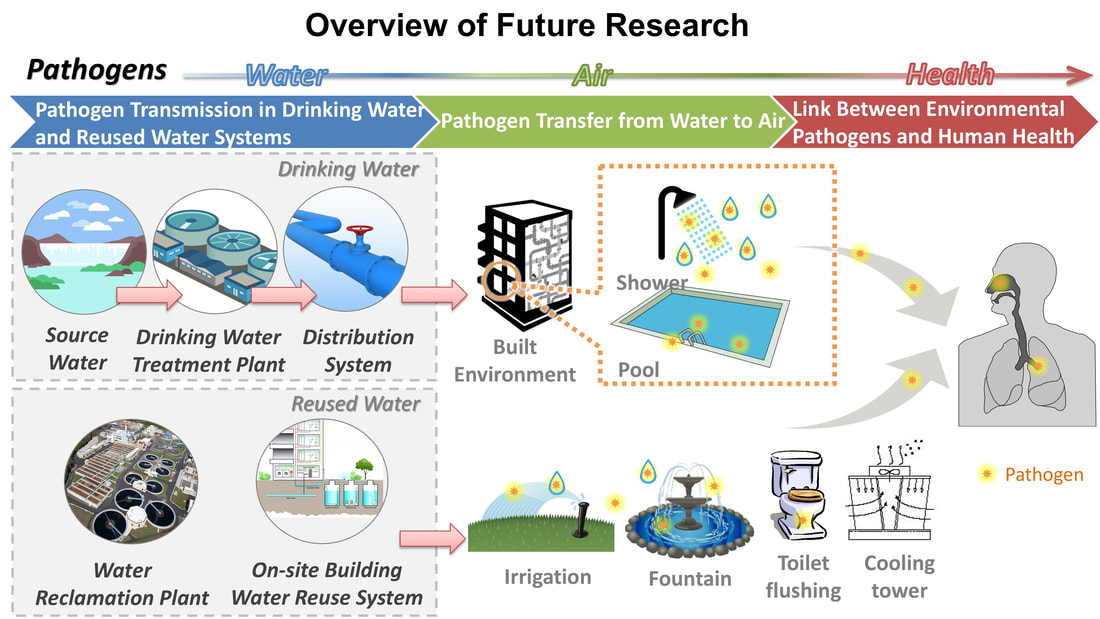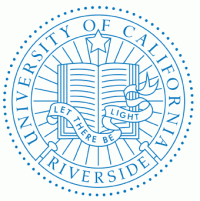
Sponsored Projects
* Vesicle-Cloaked Virus Clusters as Emerging Pathogens: Will They Challenge Current Disinfection Paradigm? (PI)
National Institutes of Health, 2021
* Novel Quantitative Methods for Indigenous Viruses in Wastewater: Improving the Assessment of Water Reuse Treatment Performance (co-PI)
United States Environmental Protection Agency, 2021
* Electrospun Nanofibrous Air Filters for Coronavirus Control (PI)
National Science Foundation, 2020
* Presence, Persistence, and Inactivation of Vesicle-Cloaked Rotavirus or Norovirus Clusters in Water (PI)
National Science Foundation, 2020
* Interactions between Photoreactive 2D Nanomaterials and Biofilms. National Science Foundation (PI)
National Science Foundation, 2019
Research topics
Control of biofilms in engineered water systems
Biofilms in engineered water systems can facilitate the accumulation, persistence, propagation, and release of pathogens. While disinfectants are commonly applied in engineered water systems, the biofilms can be resistant to the exposure of traditional disinfectants. Therefore, optimization of disinfection strategies and development of novel anti-microbial materials are needed. In this study, the mechanisms of how biofilms respond to disinfectants/anti-microbial materials will be elucidated. Specifically, the biofilm structural and mechanical properties in response to both traditional disinfectants and novel photoreactive anti-microbial nanomaterials will be evaluated. The genomics, transcriptomics, and proteomics tools will also be applied to explore the interactions between gene regulations, biofilm physical and chemical properties, and properties of disinfectants/anti-microbial materials. The outcome of this project will guide development of biofilm control strategies. Furthermore, the evaluation on the novel photoreactive anti-microbial materials can also provide insights in optimization of food processing facilities and medical apparatus.
Pathogen aerosolization in built environment and pathogen source tracking
Opportunistic pathogens targeting in human respiratory tract, such as Legionella pneumophila, some non-tuberculous mycobacteria species, and Pseudomonas aeruginosa, are prevalent in drinking water distribution and home plumbing systems. These opportunistic pathogens can transfer from water to air and infect humans via inhalation during water use events. However, our knowledge on this pathogen aerosolization process is still very limited. Therefore, this study aims to identify the mechanisms and key factors (including pathogen physicochemical characteristics, water use patterns, ambient temperature, and disinfect exposure) determining pathogen aerosolization and viability. Different built environment settings that may produce a significant amount of aerosols from water, including the use of shower systems, swimming pools, therapy pools (in hospitals), humidifiers (in hospitals), and jetted hot pools (in hotels) will be studied. The source of pathogens in built environment will also be tracked by using the advanced gene sequencing tools. The results of this study will provide information for the optimization of home plumbing and HAVC system design.
Persistence and infectivity of environmental pathogens
Dose-response relation and infectivity of pathogens have been studied to provide information for pathogen risk assessment and control. However, how the pathogen infection behaviors in response to environmental conditions is still largely unknown. In this research, the pathogen persistence (viability and recovery), infectivity (both in vivo and in vitro), and virulence (gene expression and toxin production) will be investigated under different environmental conditions (such as ambient air humidity, temperature, and disinfectant exposure). In addition, the biofilm formation ability of a certain pathogen in simulated human environment will also be studied.
Pathogen risks associated with water reuse practice
There is a pressing need for water reuse due to global water scarcity. While most research is focused on potable water reuse, health risks caused by pathogens in reused water for non-potable use (e.g., irrigation, landscaping, and toilet flushing) have been largely overlooked. In this study, the pathogen transmission in water reclamation facilities and green buildings with on-site water reuse systems designed for non-potable water reuse (e.g., irrigation, landscaping, car washing, and toilet flushing) will be studied by both field studies and lab-scale setup.
Other interests
Pathogen transmission and control in food industries and health facilities
We are always open to new ideas and novel techniques!
